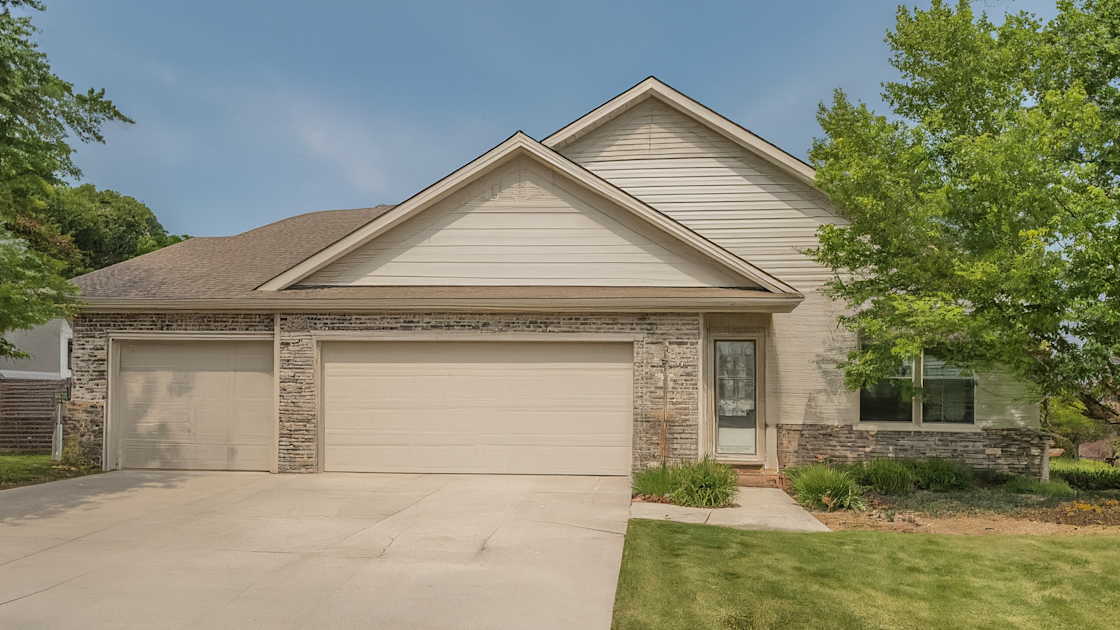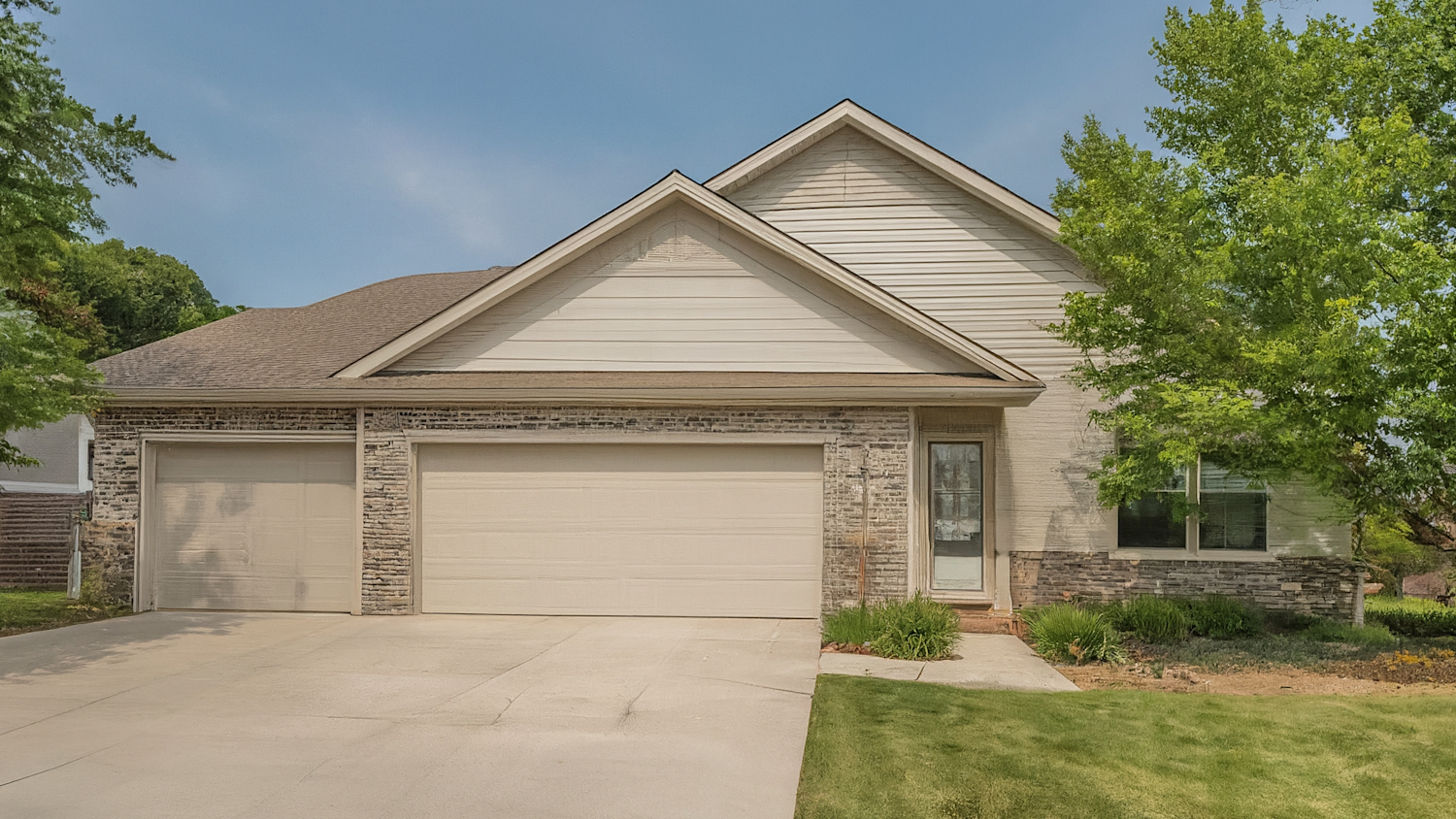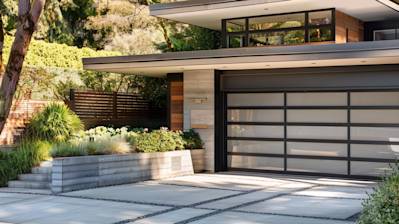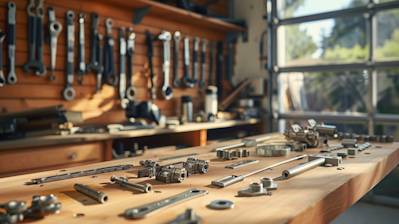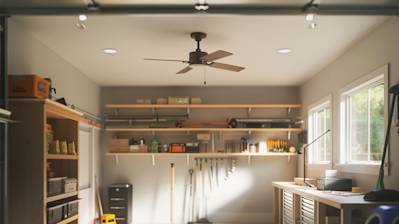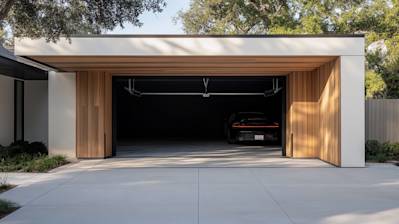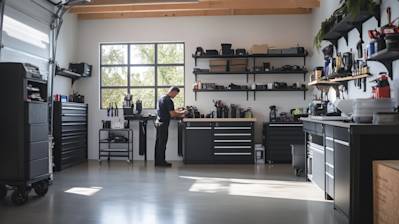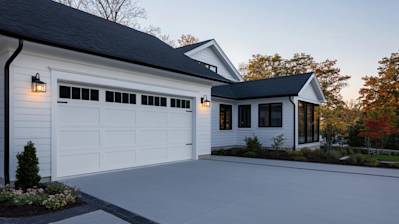Throughout the following article, we will dive into the realm of balancing garage doors. Being a critical item for the maintenance of your property, understanding how to balance a garage door will add years to its lifespan and save you potential future repair expenses.
Understanding The Importance of Garage Door Balance
Garage door balance refers to the equilibrium status of the door, a state where it neither falls by itself when left partially open nor does it take significant effort to lift. When your garage door is perfectly balanced, it should stay in place when you decide to let go of it at any point of its upward or downward motion.
Why is Garage Door Balance Crucial
The importance of the perfect balance of a garage door comes down to two main aspects: safety and the lifespan of the door.
For safety, an unbalanced garage door poses a risk as it can easily shut down unexpectedly. This can lead to potential accidents and cause serious injuries, especially in a home environment where young children or pets may wander underneath.
In terms of lifespan, an unbalanced door can cause unnecessary stress and strain on the garage door opener and its relevant structures, reducing its longevity significantly. This might end up being a costly affair in the long run as you might have to replace either components or the entire door system due to wear and tear.
How to Check Garage Door Balance
Before learning about the actual process of balancing the garage door, one must understand how to check if the garage door is unbalanced and requires adjustment.
Disconnecting the Automatic Opener
The automatic opener helps in lifting the garage door, however, when checking the balance, we don't want its mechanisms to interfere with our assessment. So, you will need to deactivate it temporarily. In most garage doors, you do this by pulling down on the emergency release handle, usually a red cord hanging from the opener.
Manually Opening and Closing the Garage Door
Once the automatic opener is disconnected, try lifting the door to its halfway point, then let go. A balanced door will stay in place, while an unbalanced one will either rise or fall on its own. If it moves, it means that it is unbalanced and hence, needs to be adjusted.
Balancing Your Garage Door
Now that you have determined that you have an unbalanced garage door, the next step is to correct the imbalance. Remember, if your door is heavily unbalanced and you are not comfortable dealing with it yourself, it's advisable to hire a professional.
On Single Panel Garage Doors
If you have a single-panel garage door, you'll usually find it's the torsion spring that needs adjusting.
- First, ensure that the door is closed.
- Using a sturdy ladder, reach for the spring located above the door. This spring connects the door to the opener motor.
- There would be an adjusting screw there which you will need to tighten or loosen. If the door falls on its own, you should tighten the screw. If it rises on its own, you should loosen it.
- Open and close the door again to examine its balance. Repeat the previous steps if required.
Please take note, handling a torsion spring can be dangerous as it is under a lot of tension. If you are uncomfortable, please hire a professional.
On Sectional Garage Doors
Alternatively, if you have a sectional door, adjusting the balance may involve manipulating side-mounted extension springs instead.
- With the door closed, locate the extension springs on the sides of the door.
- To adjust the tension, you will need to move the hooks of the spring to a higher or lower hole on the track. If the door closes too quickly, you should move the hook to a higher hole. If it rises on its own, then move the hook to a lower hole.
- Open and close the door again to examine its balance. Repeat the previous steps if required.
Post Balancing Routine
After your successful balancing act, remember to connect your garage door back to the automatic opener. After ensuring that your opener has been reconnected, verify the balance of the door again by initiating the opener. If it operates without any hitches, you have successfully balanced your garage door.
The Cruciality of Regular Checks
Don't underestimate the importance of your garage door balance, even though it might seem minor. Garage doors are large, heavy structures that can cause significant harm if not handled properly. Regular checks for garage door balance should be included in routine property maintenance.
Hiring a Professional
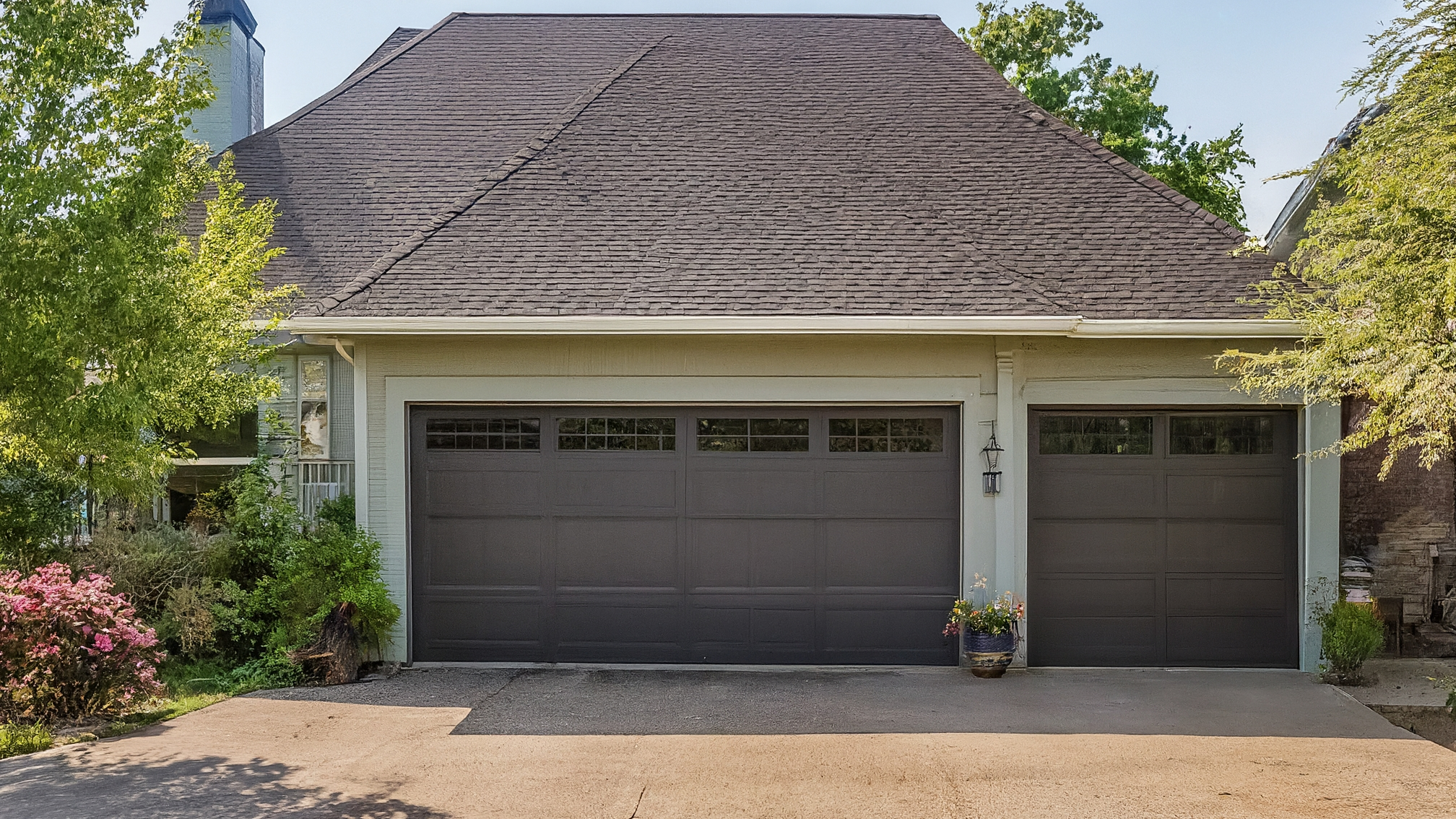
Frequently Asked Questions about How To Balance Garage Doors
What are some Signs that my Garage Door is Unbalanced?
Spotting an unbalanced garage door earlier on can save you from potential risks and hefty repair bills. Some tell-tale signs include unusual noises when operating the door, shaky movement and not staying at a partially opened position. Also, if the door appears heavier to lift or falls quickly when releasing, it might be unbalanced.
Can I Balance my Garage Door by Myself?
Although balancing a garage door entails intricate procedures, some homeowners prefer DIY methods to professional services. If you have the right tools and sufficient technical knowledge, you can balance your garage door at home. However, for safety reasons, it is better to engage a professional garage door technician if you're unsure of the correct process.
What Safety Precautions Should I Take when Balancing a Garage Door?
Balancing a garage door can be quite dangerous if not carried out with caution. Make sure the garage door opener is unplugged and the door is closed before commencing the work. Never attempt to adjust the high tension spring without proper tools and knowledge, and always consult the manual or professional help when in doubt.
What Tools Do I Need to Balance a Garage Door?
Several tools are needed to balance a garage door successfully. These include, but are not limited to, a sturdy ladder, pliers, a wrench, a flathead screwdriver and safety goggles.
What are the Steps in Balancing a Garage Door?
Balancing a garage door requires strict adherence to instructions to avoid damages or mishaps. It primarily involves adjusting the garage door springs, checking the door balance and making necessary tests and adjustments. Consult the manual that came with your garage door or seek professional advice.
What Do I Do If my Garage Door Still Won't Balance?
If your garage door still seems unbalanced despite your best efforts, it's time to call a professional. Don't keep forcing the door or making adjustments as you might cause more harm. A professional garage door technician understands the intricacies involved and has the necessary tools to fix the balance of your garage door.
How Often Should I Balance my Garage Door?
The frequency of balancing your garage door depends on factors like how often it is used, the weather conditions in your area and the age of the door. Regardless, it is important to check the balance of the garage door at least once or twice a year as part of its maintenance.
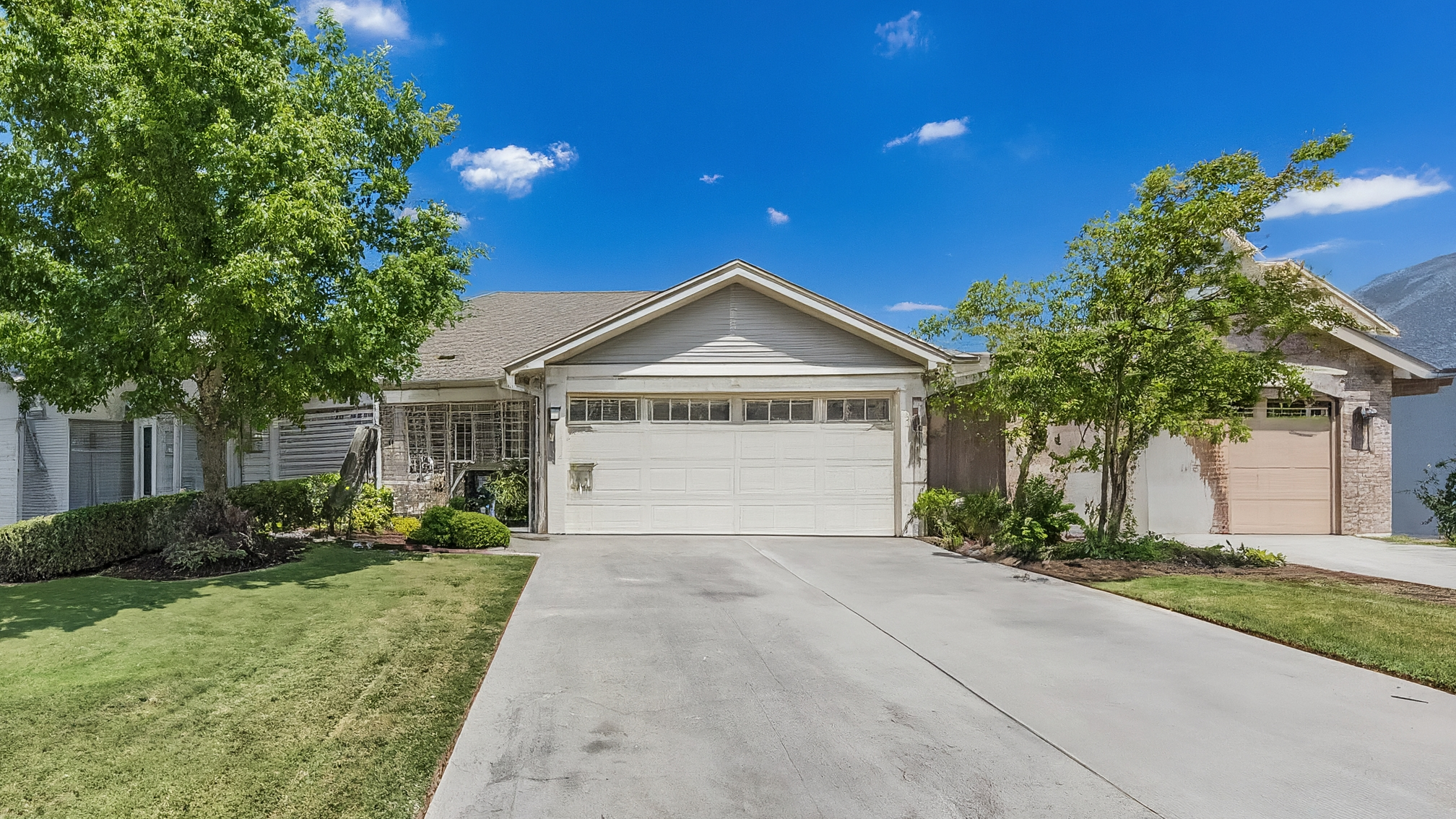
Pros of Balancing Garage Doors
Improving the Lifespan of the Garage Door
Balancing a garage door can significantly extend the life of the system. This is because when a garage door is properly balanced, each component of the system can function as it should, reducing strain and subsequent wear and tear.
Reduced Wear and Tear on Components
A balanced garage door doesn't just benefit the door itself, but also the various components that collaborate to make its operation seamless. These components include the rollers, springs, and even the electric opener. A well-balanced door reduces the pressure on these components, consequently reducing the risk of a sudden breakdown and prolonging their service life.
Low Maintenance Costs
Since balancing a garage door curtails the rate of wear and tear on door parts, this means that you'll spend less on repairs and replacements, thus making a well-balanced door a cost-effective solution in the long run.
Safety
When a garage door is balanced correctly, it significantly contributes to overall safety.
Prevents Accidents
A properly balanced garage door ensures that the door doesn't slam shut unexpectedly or get stuck halfway. These scenarios can be dangerous, especially in homes where children could be playing around the garage area.
Improved Security
A well-balanced garage door will open and close correctly, thereby mitigating the chances of leaving your garage partially open due to mechanical failures.
Enhanced Operational Efficiency
A well-balanced door operates more smoothly, quietly, and reliably, thereby making your everyday operations seamless and less strenuous.
Less Noise
Garage doors can be notorious for creating disturbances due to their grinding and squeaking sounds. Fortunately, simply keeping the garage door balanced can resolve such issues, providing a quieter environment for you and your neighbors.
Expedited Operation
Balancing eliminates undue resistance and friction, enabling the door to open or close faster. This can prove to be a convenience, especially when you're in a hurry.
Cons of Balancing Garage Doors
Time-Consuming
Although balancing a garage door provides numerous benefits, it's not a task that can be carried out in a few minutes. It demands attention to detail, which necessitates plenty of time.
Requires Knowledge and Skills
Balancing a garage door is not a simple DIY project. It's a task that involves technical knowledge about the mechanisms of a garage door. Thus, if you aren't familiar with how the various parts of a garage door operate, you could end up doing more harm than good.
Potential Risk of Injury
Garage door balancing involves dealing with complex components, including tension springs that can cause serious harm if mishandled. This is why it's usually advised to leave such tasks to professionals unless you are confident in your abilities.
Cost
Proper balancing of garage doors might necessitate professional assistance. Depending on where you live and the exact requirements of the job, this can be quite costly.
Periodic Task
Garage door balancing is not a "do it once and forget" kind of task. For optimal function, garage doors need to be checked for balance periodically, which can be considered as a disadvantage for some homeowners.
Mistakes Can Lead to More Damage
In an endeavor to balance a garage door, there are chances that you could make mistakes due to inexperience, which can have a damaging effect on your garage door and potentially require even more costly repairs down the line. This risk is particularly apparent if you're trying to balance your garage door without any professional guidance.
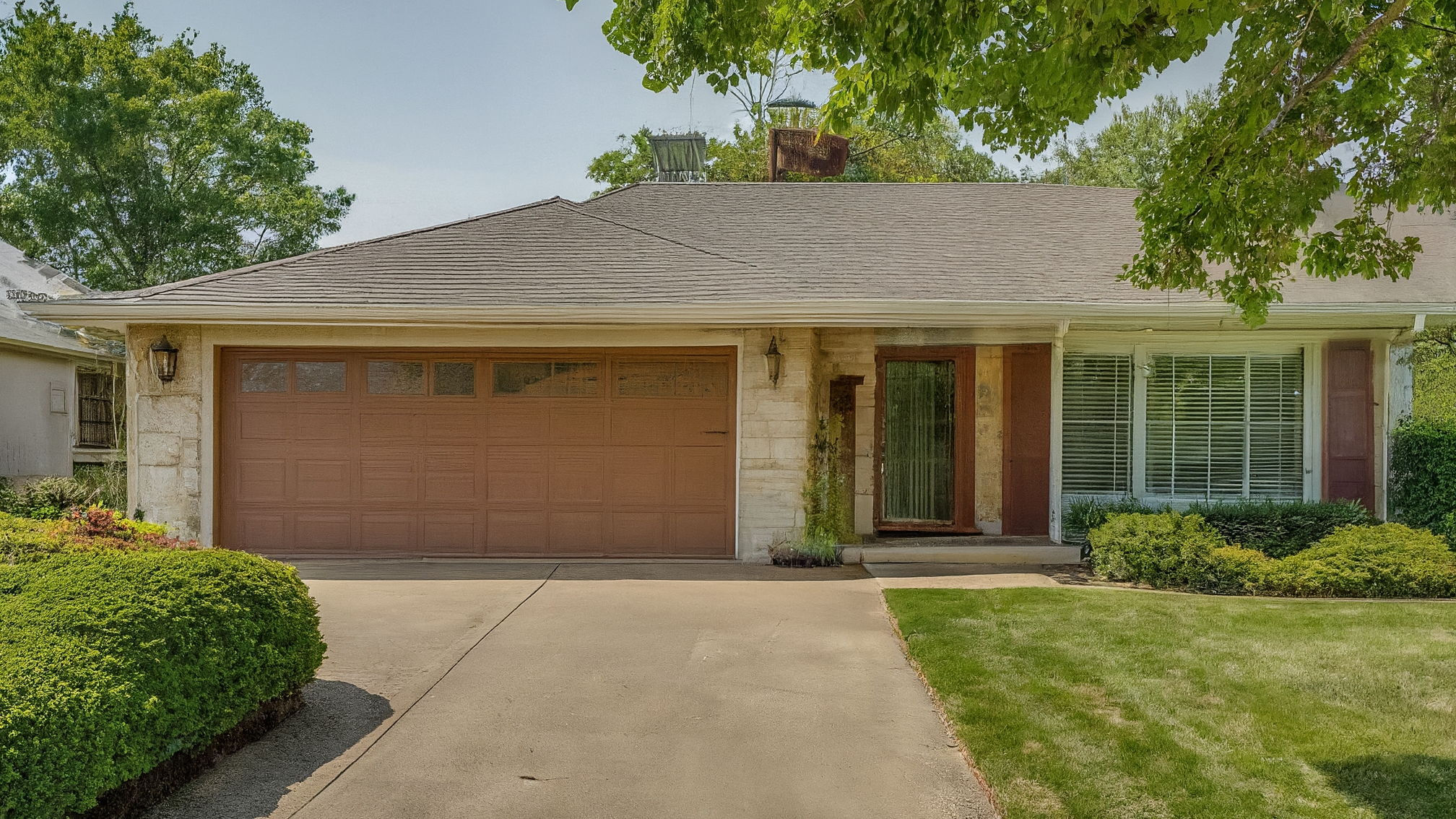
Myths and Misconceptions about Balancing Garage Doors
Garage Door Balancing is a DIY Project
One-Person Job
One common myth is that balancing a garage door is a one-person job that you can do it yourself. However, this is usually not the case. Garage doors are bulky and heavy, and they can cause serious injury if they're mishandled. For safety's sake, you should always have someone else there to help you when you're trying to balance a garage door.
Simple Process
Another misleading idea is that the process of balancing a garage door is quite simple. It actually requires a precise set of steps, involving examining the springs, adjusting the tension, and testing the balance. If done incorrectly, it could lead to accidents and further damage to the garage door. It's a task best left to professionals or experienced DIYers.
All Garage Doors are the Same
Same Balancing Techniques
A misconception surrounding garage door balancing is that all doors can be balanced in the same way. This is untrue as the exact process can vary significantly depending on the garage door's size, weight, type of opener system (manual or automatic), and whether the door has one or two torsion springs.
Same Sized Springs
There's also a myth that all garage doors use the same sized springs. In truth, the size, number, and types of springs may differ based on the weight and size of the garage door, and improper springs can unbalance the door.
New Garage Doors Don't Need Balancing
Many people believe that new garage doors don't need balancing. This is far from the truth. Regardless of its age, every garage door needs to be properly balanced. Moreover, even a slight imbalance can lead the garage door opener's motor to work harder than necessary, which may lead to premature wear and tear.
Garage Doors Don't Require Regular Maintenance and Checks
No Need for Regular Checks
One damaging myth is that you don't need to check your garage door balance regularly. Just like any other mechanical device, garage doors need regular checks and maintenance to ensure they are operating safely and efficiently.
No Maintenance Needed
Additionally, the notion that garage doors don't require any maintenance is incorrect. Beyond balancing, garage doors need regular upkeep including lubrication of moving parts, checking for visible signs of wear and tear, and ensuring all components are in working order.
Signs of Unbalance are Obvious
People often think that it's easy to tell when a garage door is unbalanced. Despite the fact that severe unbalance can cause noticeable issues like a sagging door, issues can exist even without obvious signs. It may be operating inefficiently, straining the motor, and wearing out parts prematurely without producing any overt signs that you can see or hear.
All Unbalanced Garage Doors can be Fixed
Another myth to debunk is that all unbalanced garage doors can be fixed. There are cases where the unbalance is a result of a more major problem such as spring failure, severe wear and tear, or structural damage, which might require a complete garage door replacement.
Understanding and debunking these myths about balancing garage doors is crucial if you own or handle a garage door. It aids in preserving the longevity of your garage doors and also in ensuring the safety and security of your home.
Summary
Keeping your garage doors well-balanced is crucial for their longevity and safety. This may seem like a demanding chore, especially for those who are not handy with tools, but knowing how to balance garage doors can save you a lot of headache in the future. It will not only improve the lifespan of the door and reduce maintenance costs, but also a balanced door ensures smooth functionality and reduces chances of accidents.
Understanding how to balance garage doors involves a process that includes identifying if your door is imbalanced, finding the cause of the issue, and making necessary adjustments. Each of these steps can offer a different learning experience about your garage door, and can even be a fun DIY project if you're into such interests. It’s all about doing regular checks, keeping an eye on the symptoms and knowing when it's time to grab your toolbox or call a professional.
Remember, a well-maintained balanced garage door makes your home safer and more efficient. Learning how to balance garage doors and investing some time in it now and then, pays off tremendously in the long run. Additionally, if you ever get stuck, don't hesitate to consult a professional. After all, when it comes to the safety and functionality of your home, it’s always better to be safe than sorry.
About 1A Garage Doors
At 1A Garage Doors of Sacramento, CA, we're much more than your average garage door company - we're your local, reliable partner in making sure your garage doors are as functional, safe, and stylish as possible. Nestled in the heart of Sacramento, we've been proudly serving our community with top-notch garage door sales, installation, repair, and maintenance for years. Our dedicated team of skilled technicians, renowned for their expertise and friendly demeanour, can handle every garage door project - large or small, residential or commercial. With a keen eye for quality and a deep commitment to customer satisfaction, 1A Garage Doors is Sacramento’s go-to choice for all things garage doors.

